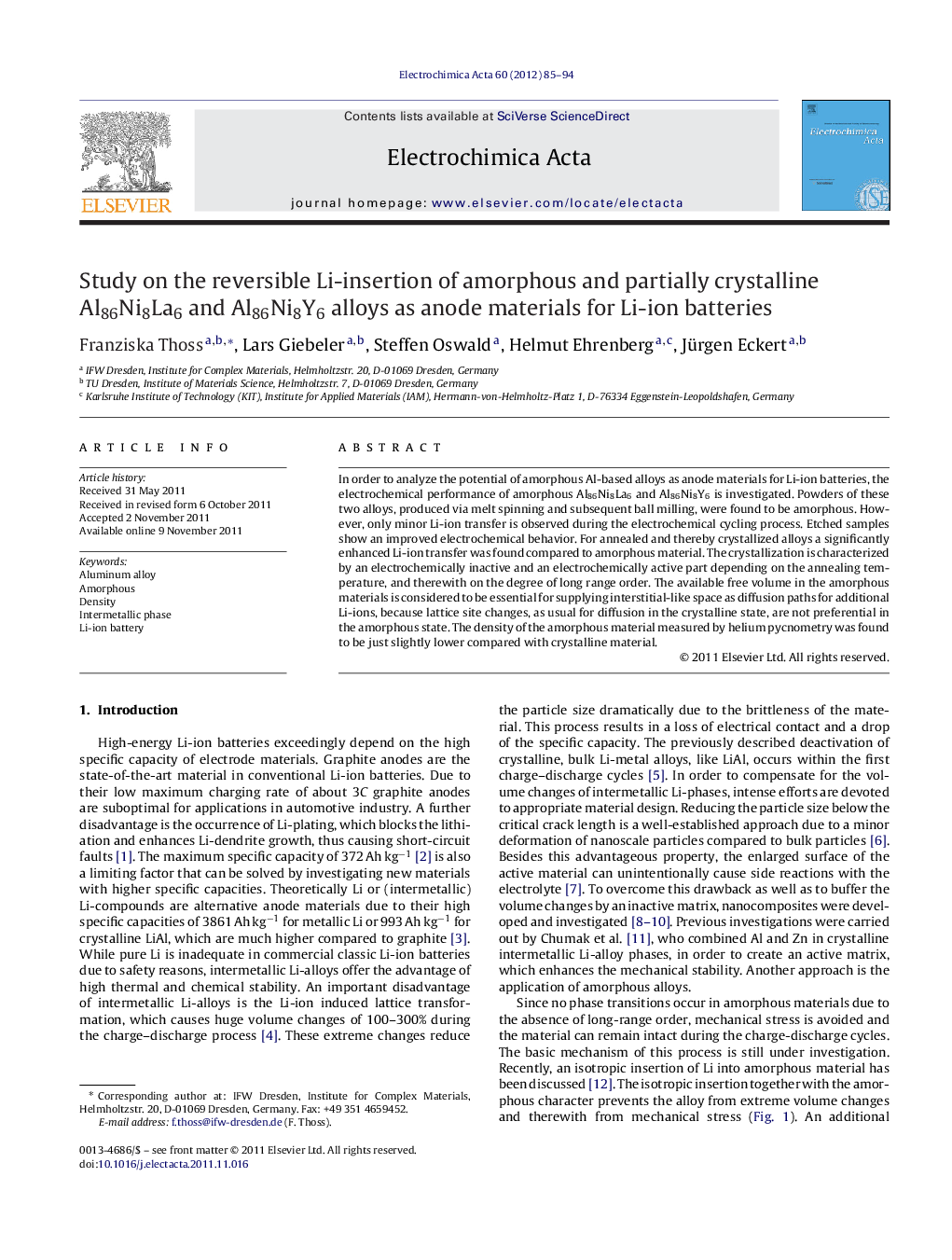| Article ID | Journal | Published Year | Pages | File Type |
|---|---|---|---|---|
| 188962 | Electrochimica Acta | 2012 | 10 Pages |
In order to analyze the potential of amorphous Al-based alloys as anode materials for Li-ion batteries, the electrochemical performance of amorphous Al86Ni8La6 and Al86Ni8Y6 is investigated. Powders of these two alloys, produced via melt spinning and subsequent ball milling, were found to be amorphous. However, only minor Li-ion transfer is observed during the electrochemical cycling process. Etched samples show an improved electrochemical behavior. For annealed and thereby crystallized alloys a significantly enhanced Li-ion transfer was found compared to amorphous material. The crystallization is characterized by an electrochemically inactive and an electrochemically active part depending on the annealing temperature, and therewith on the degree of long range order. The available free volume in the amorphous materials is considered to be essential for supplying interstitial-like space as diffusion paths for additional Li-ions, because lattice site changes, as usual for diffusion in the crystalline state, are not preferential in the amorphous state. The density of the amorphous material measured by helium pycnometry was found to be just slightly lower compared with crystalline material.
► We investigated amorphous Al-based alloys as anode materials for Li-ion batteries. ► The density is slightly lower in the amorphous state than in the crystalline. ► Amorphous alloys enable low Li-transfer compared to the crystallized analogs. ► Threshold on the specific capacity depends on the annealing temperature. ► Amorphous alloys as precursors offer broad elemental variability and homogeneity for further battery research.
